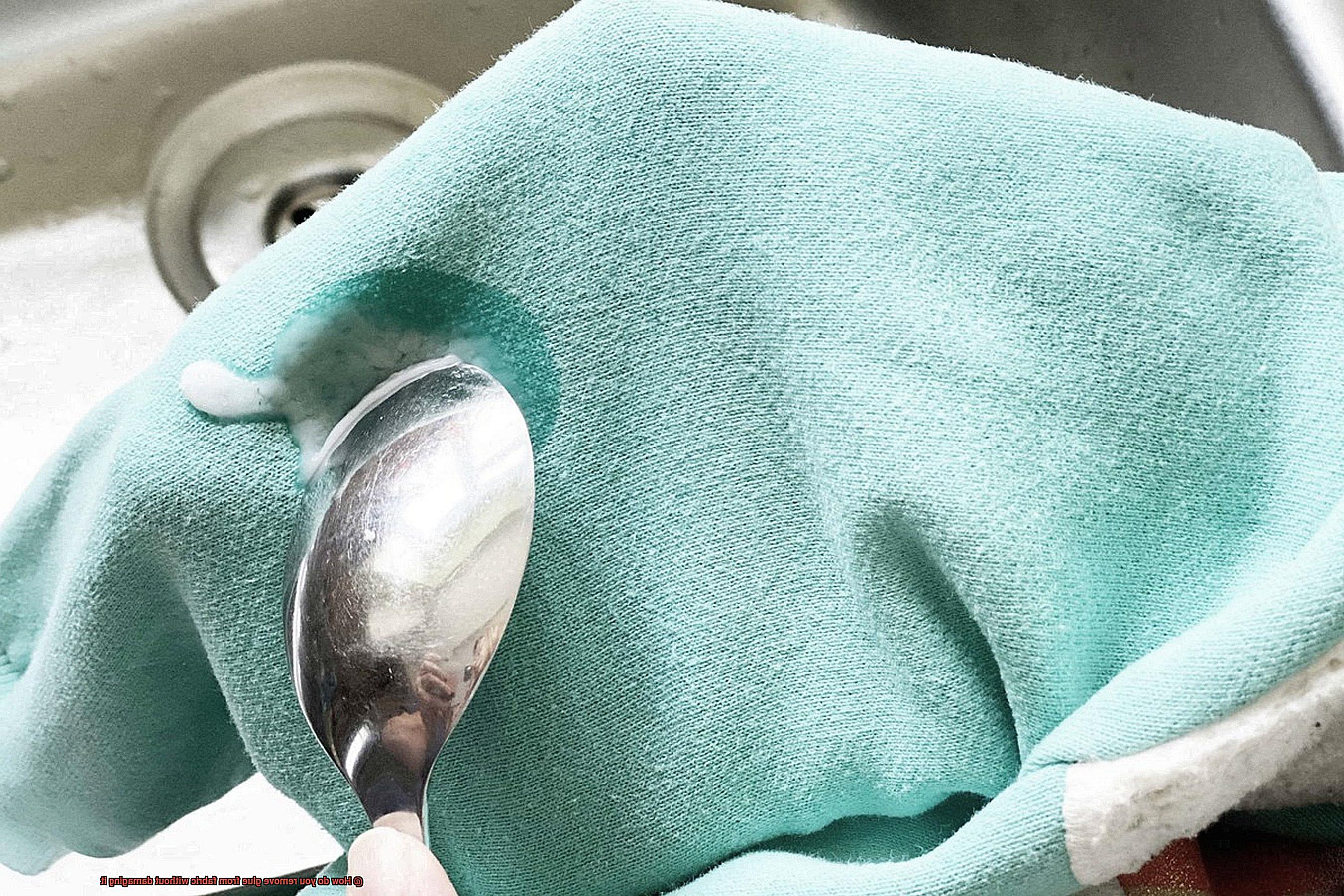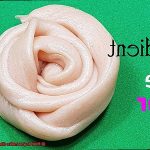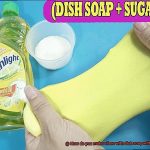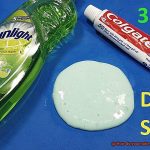Whether you accidentally dribbled glue on your favorite shirt or discovered stubborn residue on your curtains, the fear of causing irreparable damage can send anyone into a panic. But fear not. In this handy guide, we’ll share foolproof methods to remove glue from fabric without leaving a trace or compromising its integrity.
Crafty mishaps, accidental spills, or pesky sticker remnants – whatever the source of your glue-related headache may be, knowing the right techniques is key. While it may seem like an impossible task, with a little patience and the right approach, you’ll bid farewell to glue stains forever.
We’re here to explore various methods – from gentle home remedies to specialized techniques – because different types of glue call for different removal approaches. So grab that stained fabric and get ready to dive headfirst into the world of glue removal.
Let’s say goodbye to sticky situations together, shall we?
Precautions before attempting glue removal
Contents
- 1 Precautions before attempting glue removal
- 2 Method 1: Using solvents like rubbing alcohol or acetone
- 3 Method 2: Applying heat to soften hot glue
- 4 Method 3: Removing fabric glue or adhesive tape residue with dish soap and warm water
- 5 Special considerations for delicate fabrics or sensitive dyes
- 6 Dealing with stubborn or dried-on glue stains
- 7 Preventive measures to avoid future glue mishaps on fabric
- 8 Cleaning up after glue removal process
- 9 Conclusion
Glue stains on fabric can be a vexing eyesore. Whether it’s a crafting mishap or an accidental spill, removing glue from fabric requires caution and proper techniques to avoid exacerbating the damage. In this article, we will explore essential precautions to take before attempting glue removal, ensuring the preservation of your cherished fabrics.
Identify the type of glue:
Not all glues are created equal. Water-based glues are typically easier to remove with water and mild detergent, while formidable adhesives like super glue demand a solvent-based approach. Take the time to discern the type of glue you’re dealing with to determine the most effective removal technique.
Test in an inconspicuous area:
Before unleashing any cleaning agent or solvent on the stained area, always conduct a patch test in an inconspicuous spot of the fabric. This simple yet crucial step allows you to gauge if the cleaning agent triggers any adverse reactions or discoloration. If any negative response occurs, seek professional assistance rather than risking further harm.
Read fabric care instructions:
Fabric care instructions are invaluable when it comes to glue removal. These guidelines provide explicit instructions for handling the fabric during the removal process, including recommended temperatures and detergents. Adhering to these instructions ensures that you don’t inadvertently cause harm while trying to bid adieu to the stubborn glue.
Employ gentle techniques:
To minimize the risk of fabric damage, embrace gentle techniques when removing glue. Steer clear of harsh scrubbing or aggressive rubbing that could weaken fabric fibers or spur fraying. Instead, opt for a soft cloth or sponge and gently dab or blot the stained area to gradually coax the glue away.
Patience is paramount:
Glue removal from fabric can be an arduous task, especially if the adhesive has dried and hardened. Patience and persistence are key attributes to cultivate during this process. Rushing or applying excessive force may lead to unintended fabric damage, undoing your efforts. Remember, slow and steady wins the race against glue stains.
Seek professional help if necessary:
If you’re uncertain about safely removing the glue from a specific fabric or if your own attempts have proven futile, it’s wise to seek professional assistance. Professional cleaners possess extensive knowledge and expertise in handling various fabric types. They can provide specialized solutions for glue removal without causing any harm.
Method 1: Using solvents like rubbing alcohol or acetone
We’ve all experienced the frustration of glue stains on our favorite fabrics – those stubborn marks that seem impossible to remove. But fear not. With the right approach and the assistance of solvents like rubbing alcohol and acetone, you can bid farewell to those unsightly glue stains without causing any harm. Get ready to take charge of your cleaning arsenal as we embark on an expert guide to mastering the art of glue removal.
Rubbing Alcohol: The Versatile Hero
Rubbing alcohol, the trusty sidekick also known as isopropyl alcohol, is the secret weapon in your battle against glue stains. Here’s how to employ its effectiveness:
- Equip a clean cloth or cotton swab with a dose of rubbing alcohol.
- Gently blot the affected area, avoiding aggressive rubbing that may spread the glue or harm the fabric.
- With patience and determination, work your way through the stain until the glue begins to dissolve.
Acetone: Conquering Tough Glue Stains
Acetone, renowned in nail polish removers, is another mighty solvent for conquering glue stains. However, exercise caution during its usage:
- Perform a patch test on a small, inconspicuous area of the fabric to ensure it won’t cause discoloration or damage.
- If no adverse reactions occur, moisten a cloth or cotton ball with acetone.
- Gently dab the glue until it starts to dissolve, taking your time to prevent spreading or further saturation into the fabric fibers.

Remember: patience is your greatest ally throughout this process.
Rinse and Dry: The Final Flourish

After successfully removing the glue, it’s crucial to eliminate any remaining traces of solvent:
- Thoroughly rinse the fabric with water to wash away any lingering solvent residues.
- Allow the fabric to air dry before using or washing it, ensuring a clean and glue-free finish.
Proceed with Caution for Delicate Fabrics
While rubbing alcohol and acetone work wonders on most fabrics, delicate materials like silk or satin require extra care. When handling these precious fabrics:
- Perform a test of the solvents on an inconspicuous area first to assess any potential damage.
- If uncertain, seek professional assistance or consider alternative adhesive removal methods.
With the aid of solvents such as rubbing alcohol and acetone, you can bid farewell to stubborn glue stains on fabric without inflicting any harm. Remember to exercise patience, conduct patch tests, and exercise caution with delicate fabrics. Free your fabrics from the clutches of glue – they’ll thank you for it.
Method 2: Applying heat to soften hot glue
We’ve all experienced the frustration of accidentally getting hot glue on our clothes or fabrics. It can seem like a never-ending battle to remove it. But fear not. In this blog post, we will explore Method 2 of glue removal – the application of heat. Get ready to discover how you can safely and effectively eliminate hot glue from fabric using this powerful technique.
Gather your materials:
Before embarking on your glue-removing adventure, ensure that you have a hairdryer or a clothes iron with a low-heat setting. You will also need a clean cloth or paper towel to protect the fabric and catch any melted glue. Having these items readily available will make your glue removal process seamless.
Preheat your tool:
If you are using a hairdryer, crank up the heat settings to the maximum. For an iron, adjust it to the lowest suitable heat setting for your fabric. Allow your chosen tool a few minutes to preheat before diving in.
Apply heat to the glue:
Hold the hairdryer or iron approximately six inches away from the fabric and direct the heat towards the area with adhesive. Move the tool in circular or back-and-forth motions to evenly distribute the heat. Remember, exercise caution by avoiding excessive proximity or prolonged exposure to delicate fabrics.
Scrape off the softened glue:
After heating the glue for around 30 seconds to a minute, switch off the hairdryer or remove the iron from the fabric. Now comes the satisfying part – gentle scraping. Employ a plastic scraper or a spoon with a rounded edge to delicately scrape off the softened glue. Ensure that you apply just enough pressure to remove the adhesive without causing tears or stretching.
Remove any residue:
If there are lingering traces of glue, repeat steps 3 and 4 until you have completely eradicated all remnants. For stubborn residue, consider using rubbing alcohol or acetone on a cotton ball and gently dabbing at the area. However, always conduct a patch test on an inconspicuous part of the fabric to avoid any unwanted discoloration or damage.
Clean and dry the fabric:
Once you are satisfied with the glue removal, wipe the fabric with a damp cloth to eliminate any residual glue or cleaning agents. Allow the fabric to air dry fully before using or storing it. Voila. Your fabric is now liberated from the clutches of hot glue stains.
Method 3: Removing fabric glue or adhesive tape residue with dish soap and warm water
Well, fret no more, because I’m about to reveal a simple and effective method that will have your fabrics looking brand new. Get ready to say goodbye to those pesky stains and hello to a fresh, clean fabric.
To start off, gather your supplies: a bowl or sink, dish soap, warm water, a clean cloth or sponge, and a dash of patience. Remember, it’s always a good idea to test this method on a small, inconspicuous area first to ensure compatibility with your fabric.
Now let’s dive into the process. Mix a few drops of dish soap with warm water in your bowl or sink, making sure the water is comfortably warm, not scalding hot. We don’t want any damage here.
Once your soapy water solution is ready, wet your clean cloth or sponge with it and gently dab it onto the affected area of the fabric. Let the soapy water work its magic by allowing it to sit on the glue or residue for a few minutes.
When the glue has loosened up a bit, take your cloth or sponge and gently scrub the area in a circular motion. Remember, gentle and steady wins the race here – don’t go overboard and damage your fabric in the process.
Now it’s time for a thorough rinse. Rinse the fabric with clean water until all traces of soap are gone. If you still notice some stubborn glue or residue remaining, don’t panic. Simply repeat the process until your fabric is gleaming and glue-free.
After successfully removing all the adhesive, give your fabric some well-deserved drying time. Allow it to air dry completely before using or wearing it again.
It’s important to note that while this method works wonders for most fabric glue and adhesive tape residue, there may be some instances where it is not as effective. If you’re dealing with a particularly stubborn or dried-on adhesive, you may need to explore alternative methods or seek professional help.
Remember, each fabric is unique, so always test this method on a small, inconspicuous area first. Safety first.
Special considerations for delicate fabrics or sensitive dyes
Glue mishaps are an unfortunate reality, especially when they land on delicate fabrics or sensitive dyes. The mere thought of a fashion disaster can send shivers down our spines. But fret not. With some expert advice and simple techniques, we can bid adieu to those sticky situations without harming our beloved garments. Let’s delve into the world of glue removal and explore the special considerations for delicate fabrics and sensitive dyes.
Master Your Fabric:
Before embarking on any glue removal mission, take a moment to identify your fabric type. Delicate fabrics like silk, chiffon, lace, or satin demand extra care and attention. After all, you wouldn’t want to trade a glue stain for a torn or discolored garment.
Patch Test:
Always start with a patch test on an inconspicuous area of the fabric before tackling the entire stain. This mini-experiment will grant you peace of mind, ensuring that your chosen removal method won’t cause any unwanted damage.
Embrace Gentle Persuasion:
When it comes to delicate fabrics, adopt a gentle approach. Begin by mixing a solution of warm water and mild dish soap. Using a clean cloth dipped in this solution, softly dab the affected area. Avoid vigorous rubbing; remember, we’re aiming for gentle persuasion, not fabric friction.
Unleash Adhesive Removers:
For stubborn glue stains on delicate fabrics, turn to adhesive removers specially formulated for textiles. These magical potions dissolve adhesive substances without harming delicate materials. Apply a small amount onto a clean cloth and gently blot the glue until it loosens and can be lifted away.
Harness Nature’s Remedies for Sensitive Dyes:
Sensitive dyes necessitate extra caution to prevent color loss or transfer. Skip harsh chemicals and solvents, and instead opt for natural remedies. Vinegar or lemon juice can work wonders. Prepare a mixture of equal parts vinegar or lemon juice with water and apply it to the affected area using a clean cloth. Gently blot and rinse with cool water.
Seek Professional Salvation:
If you find yourself uncertain or hesitant about removing glue from delicate fabrics or those with sensitive dyes, don’t hesitate to seek professional assistance. Experts possess the knowledge and access to specialized products that can handle these situations without risking any damage.
Dealing with stubborn or dried-on glue stains
Picture this: a glob of glue lands on your cherished fabric, leaving behind an unsightly stain. But fear not. As an authority on dealing with stubborn or dried-on glue stains, I am here to unveil my comprehensive guide for banishing these pesky marks from your fabrics. So, gather your fabric-friendly adhesive removers and embark on this journey to restore your fabrics to their former glory.
Method 1: Unleash the Power of Heat
Harnessing the might of heat is a time-tested method for softening stubborn glue stains. Begin by draping a clean cloth or paper towel over the stain and delicately press a warm iron on top. Employing a low heat setting, ensure that the iron does not make direct contact with the fabric. With unwavering vigilance, monitor the progress and repeat until the glue starts to relinquish its grip.
Method 2: The Heroic Intervention of Adhesive Removers
Invest in a fabric-safe adhesive remover tailor-made for your specific fabric type. Apply a small amount onto a pristine cloth and gently dab it onto the stain. Allow the remover to permeate the glue for a few minutes before embarking on its removal. With meticulous attention, adhere to the manufacturer’s instructions, as some removers necessitate rinsing with water while others advocate blotting with a clean cloth.
Method 3: Nature’s Bounty – Vinegar and Rubbing Alcohol
For those who prefer natural remedies, two household warriors stand tall: vinegar and rubbing alcohol. These miraculous elixirs dissolve glue magnificently, facilitating its removal. Moisten a cotton ball or spotless cloth with vinegar or rubbing alcohol and gently dab it onto the stain. Grant it a few moments to work its magic before tackling the softened adhesive. Following this feat, thoroughly rinse the fabric with water, leaving no trace of residue behind.
Method 4: Seek the Aid of Professionals
When confronted with glue stains that refuse to yield, do not hesitate to summon professional assistance. Seasoned cleaners and tailors possess the expertise and specialized products to safely eliminate the glue without compromising the fabric’s integrity.
Preventive measures to avoid future glue mishaps on fabric
We’ve all experienced the frustration of glue mishaps on our beloved fabrics. But fear not. As an expert in preventing glue mishaps, I am here to share a tried-and-true preventive guide that will save you from future sticky situations. So sit back, relax, and let’s explore the world of glue mishap prevention together.
Read the label, my friend:
Before embarking on your glue adventure, take a moment to familiarize yourself with the label and instructions. Each glue has its unique characteristics and handling requirements. By understanding these nuances, you can avoid potential mishaps and ensure a successful project.
Test, test, test:
Imagine applying glue to your favorite fabric only to discover that it leaves an unsightly stain or weakens the fibers. To avoid this heartache, always conduct a small test on a hidden area of the fabric before proceeding with your project. This simple step will help you determine compatibility and prevent any unpleasant surprises.
Choose the right glue:
Not all glues are suitable for fabric. Some may contain harsh chemicals that can wreak havoc on your precious textiles. Opt for glues specifically designed for fabric or those labeled as safe for textiles. These specialized glues provide a strong bond without causing any harm to your cherished materials.
Less is more:
Remember the age-old adage “less is more”? Well, it certainly applies to applying glue on fabric. Using an excessive amount can lead to seepage, stains, or even a stiff texture. So exercise restraint when applying glue – a little goes a long way.
Protect your surroundings:
Glue can be sneaky and find its way onto unintended surfaces. To prevent accidental spills or contact, cover nearby areas with masking tape or plastic sheets. This simple precaution will save you from unnecessary clean-up and potential fabric mishaps.
Act fast when accidents happen:
Despite taking all the necessary precautions, accidents can still occur. If you find yourself faced with a glue spill on fabric, don’t panic. Act swiftly by blotting the excess glue with a clean cloth or paper towel. Avoid rubbing or scrubbing, as this can exacerbate the situation. Remember, patience is key.
Conclusion:
Congratulations, fellow crafters. Equipped with these preventive measures, you are now ready to tackle any glue mishap that comes your way. By reading labels, conducting tests, choosing the right glue, applying sparingly, protecting your surroundings, and acting quickly in case of accidents, you can bid farewell to those pesky glue stains on fabric. So go forth and create without fear – your fabrics will thank you.
Cleaning up after glue removal process
You’ve successfully banished that stubborn glue from your fabric without causing any damage. But the journey isn’t over yet. Cleaning up after the glue removal process is just as crucial to ensure your fabric is restored to its original condition. In this comprehensive guide, we’ll walk you through the necessary steps and techniques to achieve a clean and pristine fabric.
Step 1: Remove Residue
Start by gently scraping off any lingering glue residue using a plastic scraper or blunt knife. Caution is key here; applying too much pressure can harm the fabric. For stubborn residue, employ a small amount of rubbing alcohol or acetone on a clean cloth, delicately dabbing it on the affected area. This will help loosen the residue for effortless removal.
Step 2: Wash the Fabric
After removing the residue, it’s time to wash the fabric. Check the fabric care label for specific instructions or restrictions before proceeding. Most fabrics can be safely washed in a machine with a mild detergent. Delicate fabrics may require handwashing or dry cleaning.
- Handwashing: Fill a basin with lukewarm water and add a small amount of mild detergent. Gently agitate the fabric in the soapy water, avoiding vigorous rubbing or scrubbing. Rinse thoroughly in clean water until all soap residue is removed.
- Machine-washing: Select a gentle cycle with cold or lukewarm water and use a mild detergent designed for delicate fabrics. Place the fabric in a mesh laundry bag or pillowcase for protection. Avoid mixing with rougher materials that could snag or damage the fabric.
Step 3: Proper Drying
Once washed, it’s essential to dry the fabric properly. Air drying is usually safest for delicate fabrics, minimizing shrinkage and damage from high heat. Lay the fabric flat on a clean, dry towel or hang it on a clothesline away from direct sunlight or heat sources.
For fabrics that tolerate machine drying, choose a low-heat or delicate setting. Nonetheless, remove the fabric slightly damp from the dryer and finish drying naturally to prevent over-drying and potential damage.
Step 4: Inspect for Remaining Residue or Stains
After complete drying, carefully inspect the fabric for any remaining glue residue or stains. If traces of glue persist, repeat the removal process using appropriate techniques and products. Stubborn stains may require professional cleaning or specialized stain removal advice.
3SAW87ytmSA” >
Also Read: How To Remove Glue From Clothing Stickers? – Glue Things
Conclusion
Removing glue from fabric without causing damage can be a tricky task, but fear not.
There are several methods you can try that will effectively dissolve the sticky residue without harming your beloved fabric. One option is to use a gentle solvent, such as rubbing alcohol or nail polish remover, which can break down the glue and make it easier to remove.
Another approach is to apply heat to the affected area using an iron on a low setting or a hairdryer. The heat will soften the adhesive, allowing you to gently scrape it off with a blunt tool like a spoon or credit card.
These gentle yet effective remedies will help loosen the glue so that you can carefully blot it away with a clean cloth.






